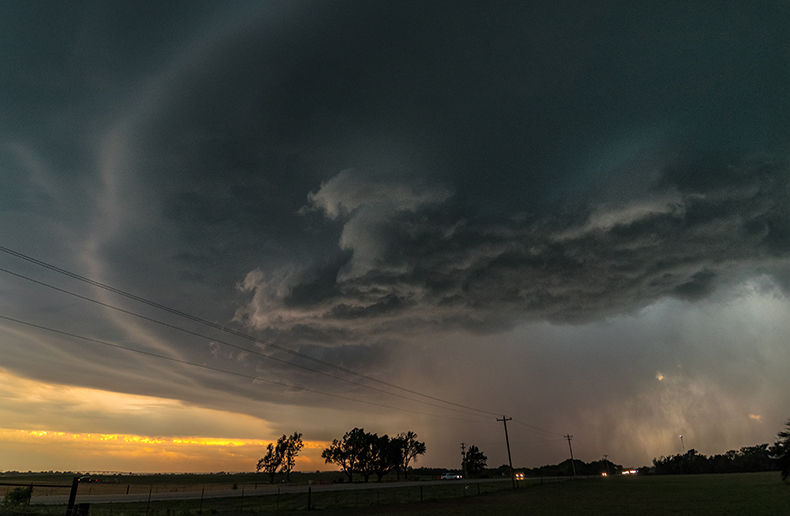The decrease in the supply of guaranteed withdrawal benefits products is resulting in a significant sales decline for this product line, say managing general agencies from across Canada.
“We have noticed a large decrease in guaranteed withdrawal benefits sales as a result of the recent changes,” says Robert Frances, president and CEO of PEAK Financial Group. Advisors have begun to doubt the long-term viability of the product. “Our GWB sales plunged by over 50% in the last two years,” Mr. Frances says (the acronymn GWB used in this article includes GMWB and GLWB products).
Shrinking market
Clients who hold products with 5% guarantees should definitely keep them, Mr. Frances adds.
This viewpoint is shared by Bruce Hammond, CEO of Ontario MGA Performins Canada. “The market is shrinking because it’s a good product for the client, but not as good for the insurance companies,” he says, adding that GWB sales exposed companies to interest-rate and market risk. He says he would not be surprised to see these products disappear or become less generous.
Jim Virtue, president and CEO of PPI Solutions, says as a result of product withdrawals and changes, his MGA has clearly seen a decrease in GWB sales, “but our overall seg fund business has not really fallen off. Advisors continue to understand the benefits of seg funds, and continue to place these products with their clients.”
Mr. Virtue adds that after Manulife first introduced its GWB to the market, this product category accounted for 50% of his MGA’s seg fund sales with the peak sales year being 2007/2008. “It really provided a strong boost to this area of our business. Today, we are still selling this product category, and it accounts for 10 to 15% of our seg fund new sales.”
John Lutrin, executive vice president and chief marketing officer for HUB Financial and HUB Capital says his MGA’s approach to this product line has always been cautious. He says that from the outset, Hub tempered its advisors excitement about GWBs by helping them see through the hype and understand the product features and nuances thoroughly. Within a year of the product’s introduction into the market, the industry saw the majority of all seg fund sales flooding into this product, while at HUB this figure was approximately 30% he says. “While sales have definitely reduced thanks to a shrinking product shelf, the impact at HUB is minimal…”
At Groupe Cloutier, GWB sales have also declined. Luc Déziel, investment director at the MGA, says advisors are increasingly turning to other investments. “My dual-licensed advisors have started selling more T-series mutual funds, corporate funds with tax advantages, because they allow holders to defer capital gains.”
Mr. Déziel recalls having sold “massive” quantities of SSQ Life’s GWB before version 2.1 came out. Today, his advisors are dividing their offer to customers between mutual funds and the 5% GWB’s available at Empire Life or Canada-Life (Editor’s note, this product has recently been modified, see page 3).
Normand Morin, CEO of Investissements Excel, gives Empire Life’s 5% guarantee a few more months to live. “I’ve heard that when GWB assets reach a certain point for an insurer, that insurer will close or modify the product. The X amount is based on the reserves required,” he explains.
Like Mr. Frances, Mr. Morin noticed a drop in GWB sales that pre-dates the last wave of changes this summer. “We’re selling much less than a few years ago. When the product was new, advisors tried to see which of their customers could benefit from it. After those were identified, sales levelled off,” Mr. Morin explains. All the same, he has observed an upsurge in sales in recent weeks. “Customers want to profit from the 5% guarantee while they can.”
Eric Benchetrit, director of professional development with Independent Financial Concepts Group (IFCG) says from when they were first launched, GWBs represented 50% of IFCG’s overall seg fund business. Now this figure has dropped to 30%.
IFCG is dealing with the shrinking product shelf by migrating business to carriers whose GWB offerings are “still a viable consumer value.”
Mr. Benchetrit adds that IFCG is also looking at alternatives solutions such as traditional annuities.
He says advisors have reacted with disappointment to the GWB product withdrawals and changes, but they also realize that this was inevitable. “In some cases, it has boosted sales as advisors have used a “fire sale” come-and-get-it-while-you-still-can mentality.”
Get it before it’s gone
Meanwhile, David Spector, director of wealth, at Qualified Financial Services, says GWB sales are as strong as ever at QFS, if not stronger. In fact, the MGA’s sales theme this fall is Get it before it’s gone! “We feel that we need to provide these products to our clients for their retirement needs before they’re gone. Every year that we have offered these GMWBs, we have seen major sales growth at QFS.”
He adds that he hasn’t seen any QFS advisors decide to stop selling these products. “Actually, I have seen more sales since the pull-back of these products in the industry.”
Robert Hack, vice president, Investments with Customplan Financial Advisors, also has not yet seen a sales decline. GWB sales have stayed level since they first gained traction in 2008 and 2009, he says.
He adds that if ever these products completely disappeared from the market, he believes advisors will continue to be able to serve their clients’ needs. “Quite frankly, GMWB/GLWB programs have not been in existence in the Canadian market long enough to make them irreplaceable. A GMWB/GLWB program is only one solution available to provide an income stream. The many forms of annuities, GIC’s and income investment funds are just some of the solutions that seem to have outlasted the GMWB.”
Mr. Lutrin of Hub also believes advisors will be able to adapt if GWBs disappear from the market. GWBs are essentially a type of bundled product “a combination of a variable equity product and a guaranteed income or annuity.” He says an advisor who plans strategically would accomplish similar results that may even be more customized to their particular client by using such conventional planning strategies such as the use of annuities, segregated funds, dollar-cost-averaging, systematic withdrawal plans, etc.
For advisors who may be struggling to adjust to the changes in the GWB market, Mr. Lutrin recommends that they look at the pre GWB era. “Get back to the basics – clients have always had options to provide income for life. GMWB products were never the one solution to solve all retirement income needs...There will be life after GMWBs.”
Blayne Brethour, an investment associate with WealthLINK Financial Services, also believes the shrinking of the GWB product shelf is leading advisors back to traditional solutions.
If a client needs income, annuities or packaging part annuity with some longer term segregated funds could be a solution, suggests Mr. Brethour. “We do need to look at short term interest rates and not lock anyone up for too long a period of time,” he adds.
His advice to advisors regarding this shrinking market is “be sure to create a plan and not just promote a product.”
Heather McIntyre, business development manager with Insurance Supermarket, says that while advisors are still interested in selling GWBs, she is seeing a definite trend back to conventional products. “The focus is now back to the traditional seg fund and their inherent guarantees. Fortunately there has been a push by the insurers to get the MER’s in line with the mutual fund industry.”
Interest in traditional annuities is also picking up among advisors, she adds. “With less guaranteed income options, annuity quotes have picked up, but rates are historically low.”
Mr. Spector at QFS says that although he hasn’t yet seen a shift away from GWBs, he has been thinking a lot about what will replace these products should they disappear from the market altogether. “I would start to come up with a concept on the integration of selling a good segregated fund platform for the accumulation years to retirement and then sell an annuity product for the retirement years.”
For this reason, QFS, which has offered a certification course for GWB products, recently began offering a segregated funds certification course (see August 2012 edition, page 6).
Mr. Virtue of PPI believes new, more sustainable retirement solutions are on the horizon. “I do believe that the insurance industry will develop a whole new series of products, both on the insurance side and the savings side that will be of great assistance to advisors when helping them deal with their client’s needs. In the long term, I have a tremendous amount of faith.”






